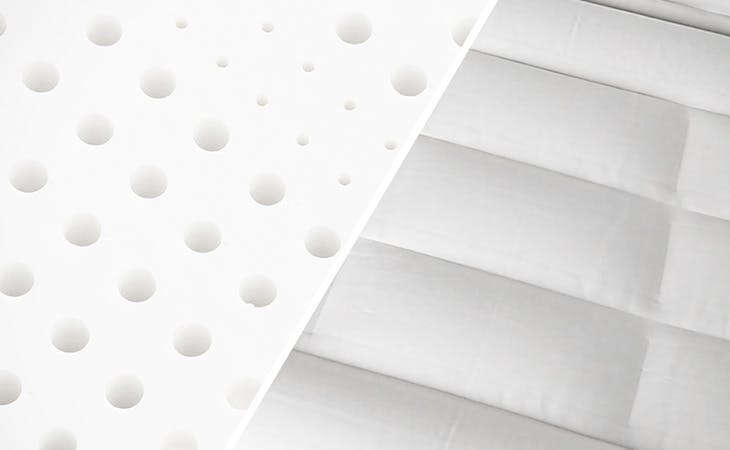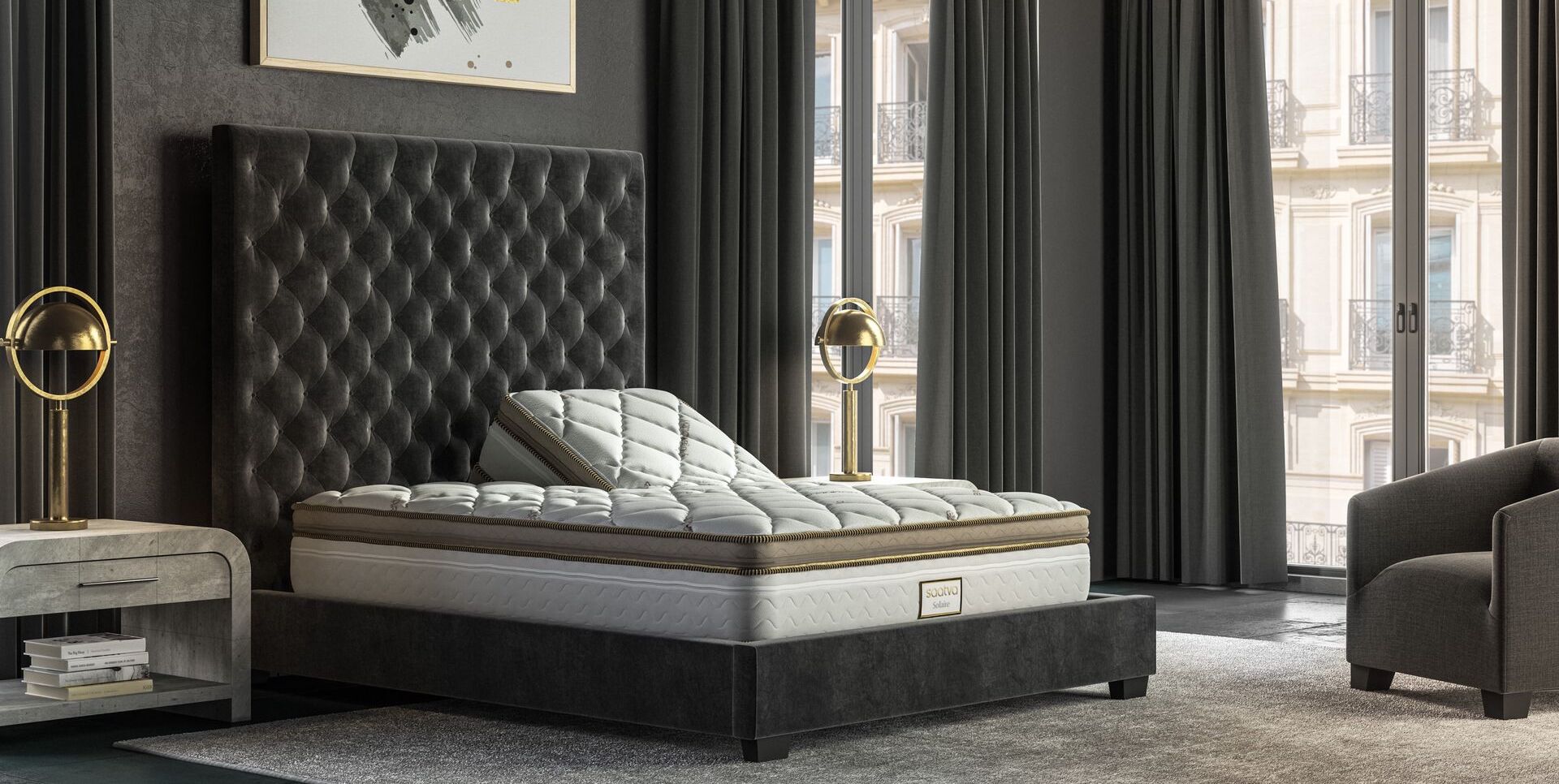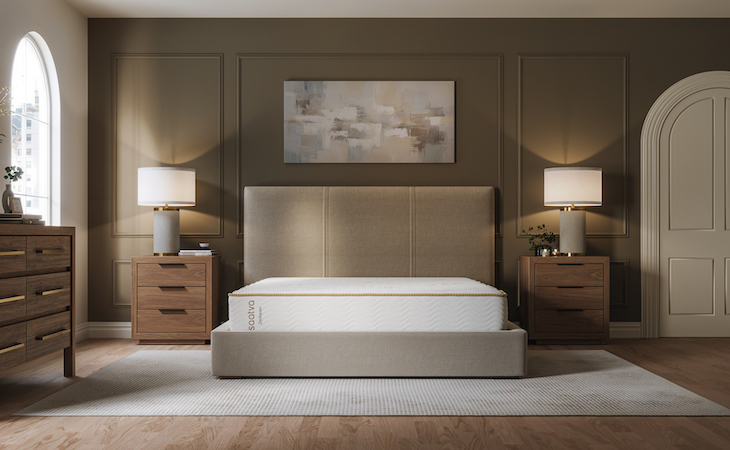If you’re shopping for a luxury mattress, chances are you’re considering one or both of the most sophisticated options on the market today:
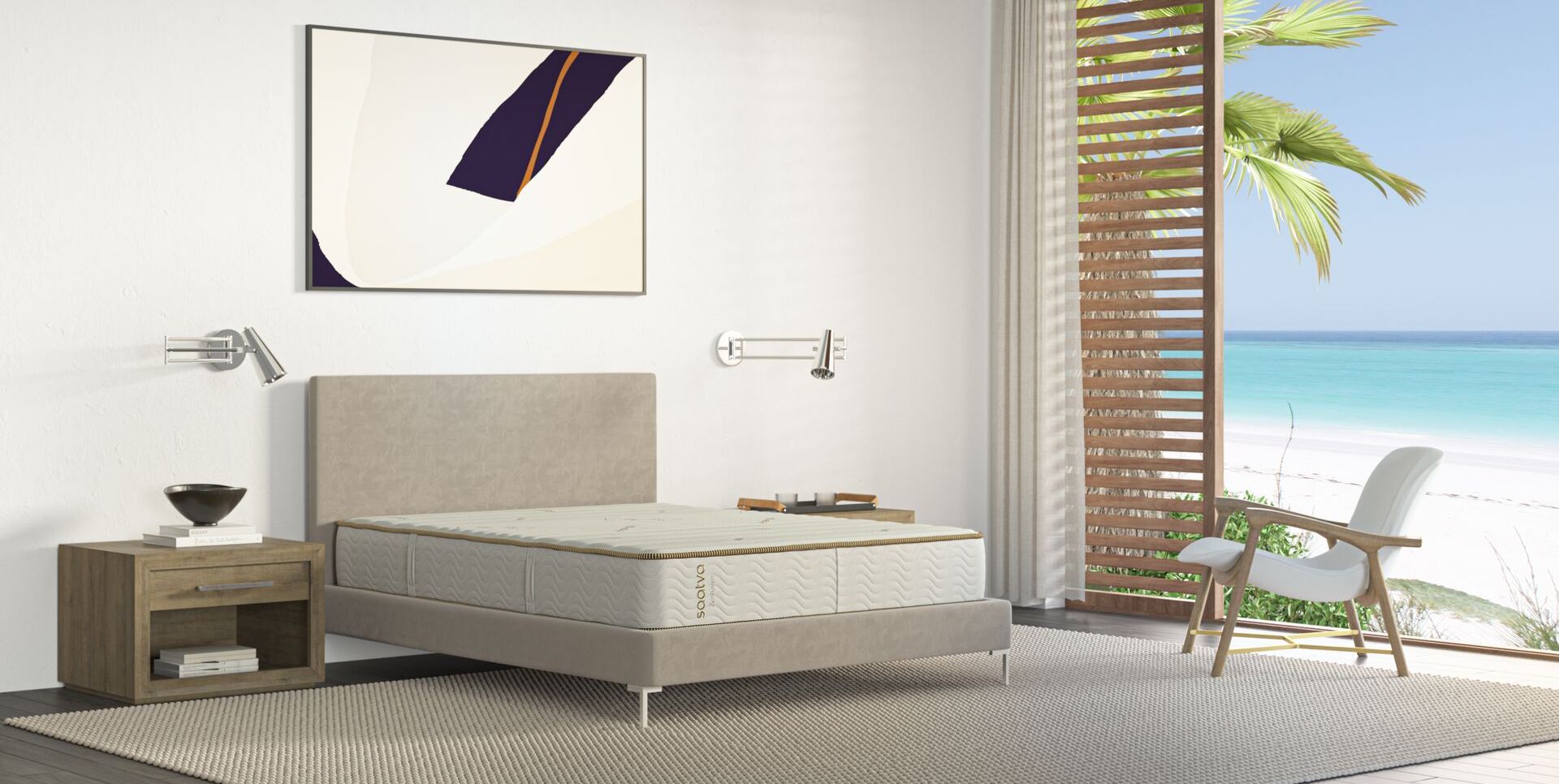
Our dual-sided organic natural latex mattress for buoyant, pressure-relieving comfort
and adjustable air beds.
While both of these categories offer a level of comfort and responsiveness that most other materials can’t match, the differences between them are substantial. Here’s what you need to know.
Adjustable air beds vs. latex mattresses: 6 points of comparison
How to decide? Here’s a rundown of the essential differences between latex mattresses and adjustable air beds.
How they’re made
All-natural latex is made from the sap of the rubber tree. To convert it into foam, the raw material undergoes processing—including being frozen and then baked—but because latex is derived from a natural source, it is biodegradable, hypoallergenic, and more eco-friendly than other types of mattresses. Some latex mattresses are partially or completely composed of synthetic latex foam, which is usually made from petroleum-based materials; these are not eco-friendly and may release toxic chemicals into the air, a process known as off-gassing.
Air beds are unique in the mattress world, consisting of individual air chambers that can be inflated or deflated to achieve a precise level of comfort. The user adds or removes air with an electric pump controlled by a handheld remote or an app. Depending on the specific model, the mattress may include layers of polyurethane foam, latex, or memory foam on top of the air chambers for additional comfort and support.
How they feel
It’s often said that latex mattresses combine the best qualities of innersprings and memory foam, resulting in a bed that has both buoyancy and pressure-relieving comfort, or what clinical sleep educator and Saatva sleep consultant Terry Cralle, RN, describes as “resilient support.” “Latex mattresses support the whole body uniformly, providing good spinal alignment for most types of sleepers,” says Cralle, author of Sleeping Your Way to the Top: How to Get the Sleep You Need to Succeed. That’s one reason why latex is often recommended for those who experience back or joint pain. (Read more about sleeping better with back pain here.)
The air bed’s distinguishing characteristic is its unprecedented level of adjustability. Depending on the model, the bed may have multiple air chambers with 20 to 50 distinct firmness settings, which means you can customize the feel to your precise comfort preference. Air beds commonly have separate chambers on each side, making them ideal for bed partners with different comfort needs. (Not for nothing are these beds are often dubbed “marriage savers.”)
How they perform on motion transfer, noise, and temperature
Latex and air beds both perform well when it comes to motion transfer, making either one a good choice for couples. And while neither has springs that can make noise, air beds contain an electric motor that powers the pumps, so someone who is very sensitive to noise might hear the bed at work.
Temperature-wise, latex, because of its natural open-cell structure, sleeps cool. Air beds are usually temperature neutral, though the composition of the comfort layers can make a difference in how warm or cool a given mattress sleeps.
How they perform with adjustable bases
Latex is naturally flexible, which makes it an ideal candidate for use with an
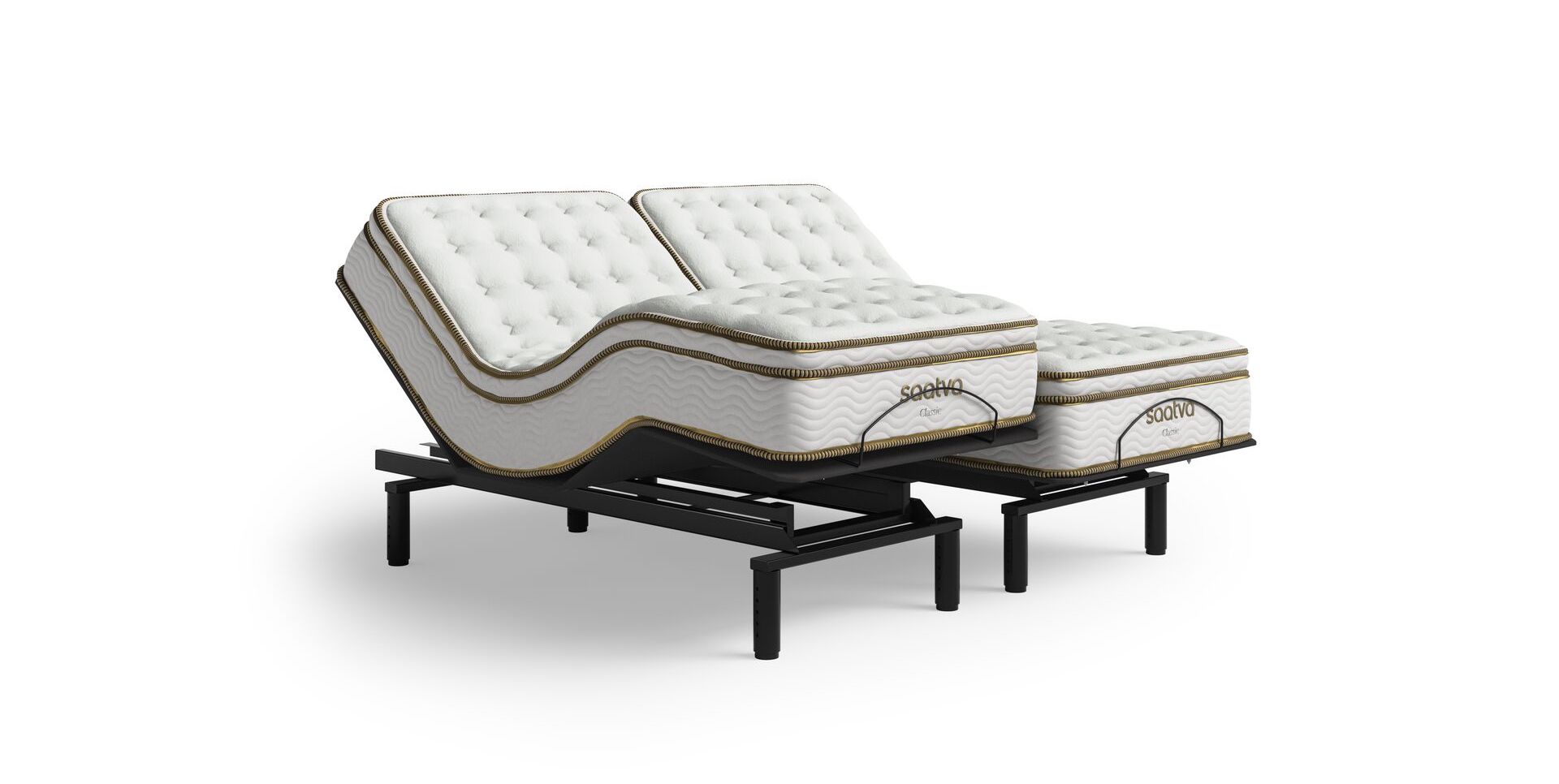
Our deluxe adjustable base with even more customized comfort options
These bases, which let you raise and lower the head and/or foot of the bed, are great for alleviating back pain or just finding the most comfortable position for relaxing, reading, or TV watching. (Learn more about choosing the best mattress for an adjustable base here.)
Air beds are often sold as a set with their own bases, which may or may not be adjustable. If you’re looking for the ultimate in personal control—an adjustable mattress and adjustable base—make sure to check the manufacturer’s recommendations before ordering.
How long they last
Latex is known for its durability—a high-quality natural latex mattress can last for up to 20 years (synthetic versions don’t have the same longevity). Adjustable air beds, too, are long-lived, with an average lifespan of eight to 10 years.
The downside of a bed with mechanical components is that you will probably have to replace parts at some point, which could get expensive depending on warranty terms. (Typically only the first two or three years are fully covered; after that, the owner is responsible for some of the cost of parts and repairs.) That said, being able to replace parts also means the mattress may last longer than other types.
How much they cost
Latex and adjustable air beds are both at the higher end of the mattress cost spectrum. Because of the cost of harvesting and processing the material, a good natural latex mattress typically runs between $1,000 and $2,500. Synthetic and blended latex cost less.
Air beds, owing to their sophisticated technology, are more expensive. Depending on the bells and whistles—such as the number of air chambers and firmness settings, and how the bed is controlled—air beds start at around $2,000 and can climb to $3,000 or more.
Related reads:
The Definitive Guide to Adjustable Air Beds
Innerspring vs. Adjustable Air Bed: 5 Key Differences
Memory Foam vs. Adjustable Air Bed: 7 Key Differences

